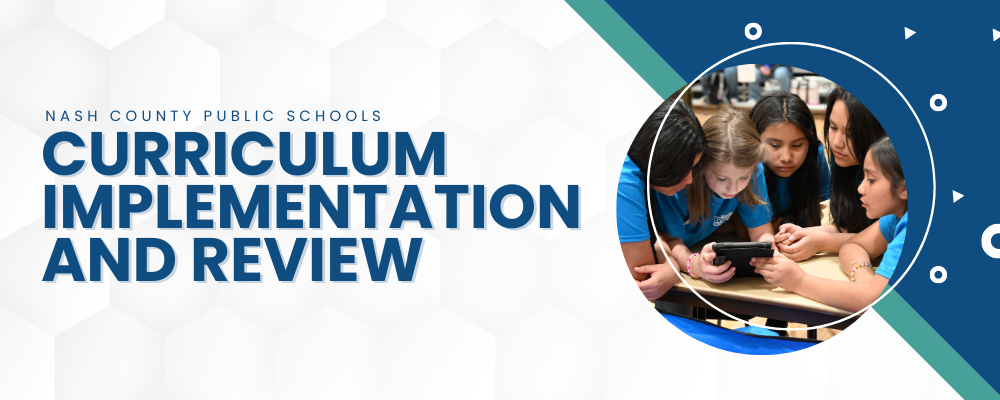
NCPS Curriculum Implementation and Review
Nash County Public Schools strives to align curriculum resources with the North Carolina Standard Course of Study. The state standards define what students are expected to know and be able to do by the end of each school year or course. It is important to conduct curriculum reviews periodically to ensure that curriculum content is current, relevant and aligned with the state standards.
Input from Stakeholders, Including Families
The Curriculum Implementation and Review Cycle is key to improving learning for our students. It is important that the process we use is transparent to our stakeholders and that it incorporates their input. This includes families.The district established “feedback loops” from such stakeholders as school leaders, teachers, families, instructional coaches and content specialists. The input gathered from these groups is essential in making decisions around curriculum development and adoption. Our district implementation team is comprehensive, comprising of educators from the Academic Services Department, Student Support Services, Data, Research, & Accountability, Equity Affairs, Professional Learning, MTSS, Special Education Services, Technology Services and school-based leadership.
Stages of Review and Development
The Curriculum Implementation and Review Cycle occurs in four main stages:
Stage 1 - Reviewing and evaluating current resources, including teacher and other stakeholder feedback.
Stage 2 - Revising, creating, and in some cases, procuring new content. This stage also requires larger stakeholder feedback. Sometimes the district pilots any new curriculum in schools throughout the district.
Stage 3 - Professional learning, which is crucial for successful implementation of any new curriculum. This would include teachers, administrators, instructional support professionals and any additional stakeholders identified as needing it.
Stage 4 - Full implementation for at least three to five years. This would include ongoing professional learning and continued improvement cycles.